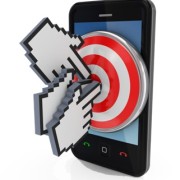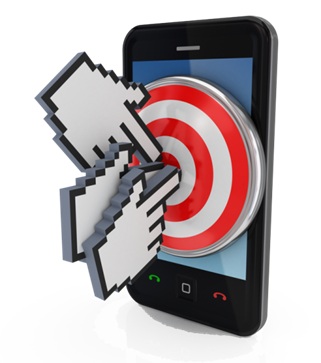 The smartphone reached maturity in 2012 as late-adopters jumped on the band-wagon, pushing share to over 50% of the mobile market. With 125 million smartphones and 50 million tablets in the hands of the US population, mobile is no longer a trend but a fact of daily life. More than 1 in 3 minutes spent online is now via a mobile device, and 4 out of 5 of those smartphone minutes is spent on mobile apps rather than the web.
The smartphone reached maturity in 2012 as late-adopters jumped on the band-wagon, pushing share to over 50% of the mobile market. With 125 million smartphones and 50 million tablets in the hands of the US population, mobile is no longer a trend but a fact of daily life. More than 1 in 3 minutes spent online is now via a mobile device, and 4 out of 5 of those smartphone minutes is spent on mobile apps rather than the web.
4 Ways Small Businesses Should Spend On Mobile Marketing
Although mobile devices aren’t necessarily only used on the go, a lot of mobile functions automatically give weight to the users’ geographic location. Because of this, smaller businesses and brick-and-mortar establishments have a lot to gain by embracing mobile as a venue in which to reach consumers. Following is a breakdown of the main ways businesses can begin to shift their marketing strategies to accommodate the transition to mobile.
1. Responsive Website
First things first: if your business’s website hasn’t had a redesign in the last couple of years, it’s long overdue. Responsive web design is popular among designers at the moment, but it’s more than a fad – it’s necessary to creating a seamless user experiences, no matter which device your website is being accessed on. Notice I assume all businesses have websites. Not having one is just not an option in the 21st century. Potential customers need to be able to find your company easily and quickly, and if you don’t have a website they’ll assume you don’t exist. Your website will be the hub of your integrated digital marketing strategy, while a responsive web design will make it accessible to the mobile consumer.
2. Ad Placement
Ad targeting platforms now allow marketers to segment audiences based on context rather than just discriminating by device. Google Adwords Enhanced Campaigns is the most recent example of this. By meshing its mobile and desktop advertising platforms together, Google has substantiated thought leaders’ suspicions that device agnosticism is the way of the future, and as such is helping to push along the transformation. The number one mobile application, Facebook, is also making inroads in the mobile advertising market by introducing geo-sensitive functions like Check-In Deals that can be leveraged for business.
3. Mobile App Development
If your business has the reach and resources to justify developing its own mobile application, some of the features that will ensure its success include push notifications, local context, social integration, and a simple e-commerce engine. There are plenty of ways to go about this, from hiring your own in-house web developer to making use of build-it-yourself platforms such as BiznessApps. However, if you don’t have the consumer base to warrant the creation of your own mobile app, it might be a better idea to leverage those already in existence for their reach.
4. Existing Mobile Apps
A wide array of apps already exist that are easy to get set up on and have been developed with business in mind. The most relevant factor in applications for mobile devices is geo-proximity, and as an extension of this, the two most popular ways for consumers to connect with businesses via mobile are by checking in and getting deals.
Checking-in to places based on a mobile device’s GPS location has become a well-established feature of mobile apps. While Facebook has recently picked it up, it’s not a new concept. Foursquare and Yelp are social recommendation sites that emphasize checking-in and sharing reviews about visited establishments. Groupon and LivingSocial are two other sites that share destinations, and also help businesses drive traffic by running promotions. These are great outlets for businesses to leverage because consumers accessing their mobile applications to search for reviews or deals are often already committed to buying.
The bottom line is every business should consider a mobile marketing
With more and more smartphones entering the market everyday, small businesses have no choice but to optimize their digital mobile marketing strategies to reach the consumer. As devices continue to converge in appearance and functionality, it would be wise for businesses to set appropriations now for dealing with this fundamental shift in the way consumers interact and make decisions. If mobile is the future, the future is now.
You can view the original article here.
Small Business Mobile Marketing
It’s important to fully understand the several forms of Mobile Marketing methods accessible to you so you can choose the ones your business could most benefit from

